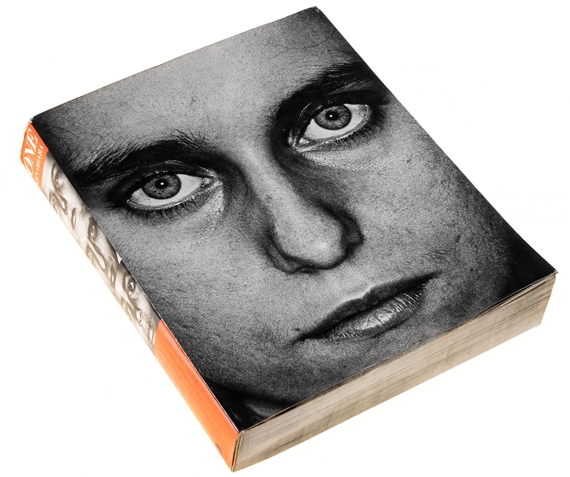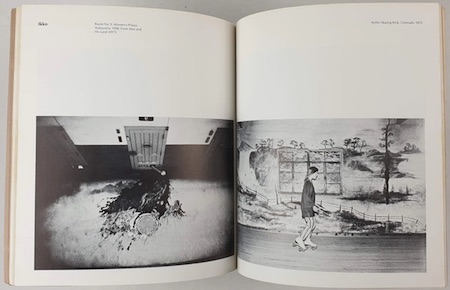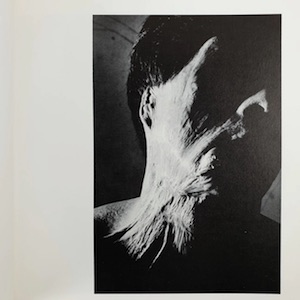 [To celebrate my 80th year above the grass, and my 56th in the photo-crit biz, I plan to dip into the archives regularly for blasts from the past, alternating them with new posts.
[To celebrate my 80th year above the grass, and my 56th in the photo-crit biz, I plan to dip into the archives regularly for blasts from the past, alternating them with new posts.
I decided to start with this one, a review of a Museum of Modern Art group show of work from abroad — a rarity among MoMA photo shows during that era, since under John Szarkowski they paid little attention to work from outside the U.S.
By the time this article appeared I had manifested in my critical practice a propensity for what I came think of as contextual criticism, in which I responded to the extra-pictorial issues raised by a project as a whole — at the opposite end of the sliding scale from textual criticism, which concentrates on the work itself.
I didn’t know it at the time, but there was a word for this approach, and a tradition behind it. As I wrote in an introductory note to another article from the archives published here in 2017:
I used the occasion to move between textual and contextual analysis, the latter taking the form of what the Germans call “ausstellungskritik.” The term doesn’t translate readily into English; literally it’s “exhibition criticism,” but in the original it denotes a critique of the presentational project, as distinct from a critique restricted to the work itself. I thought that approach would help my readers grasp the true significance of the event.

Ken Ohara, “One” (1970), cover
Later in my professional life I would have other occasions to write about the work of Japanese photographers, and even to make the acquaintance of several of those mentioned here, most notably Ken Ohara.
You can download pdf files of the full catalogue, the exhibition checklist, and the original press release here. The helpful MoMA website also offers installation shots of the show.
This review originally appeared under the headline “It Doesn’t Tell the Whole Story” in the New York Times, April 7, 1974. You’ll find it reprinted in my 1979 collection of essays, Light Readings. — A.D.C.]
•
New Japanese Photography
Much as I might wish it were otherwise, in considering the Museum of Modern Art’s latest photography exhibit and catalogue New Japanese Photography it proves impossible to discuss the photographs themselves without simultaneously analyzing the show and book.

John Szarkowski, “New Japanese Photography” (1974), cover
These latter two are, essentially, samplers. Of the fifteen photographers showcased therein, only two are given enough space to allow the evolution of their work to be traced clearly. (These are Shomei Tomatsu, with thirty-nine prints, and the younger Daidoh Moriyama with twenty-six.) The rest are restricted to roughly a dozen images each, the merest tips of their respective icebergs, especially since many of these photographers work with serial imagery. The development, structure and thematic concerns of these separate bodies of work must be inferred from these fragments selected by others. Inasmuch as those selections limit and shape our inferences, they become inseparable from the work; the degree to which this is true is amplified drastically when the inferences also include correlations between different image-makers and even larger generic considerations.
For example: New Japanese photography is exclusively black-and-white, entirely unconcerned with the investigation of straight color, manipulated color, applied color, and the technology of modern color press printing. New Japanese photography is only glancingly involved with the nude and with the explicitly erotic; it is rarely concerned with any exploration of the staged event. Multiple imagery, mixed-media imagery, collage and other photographic techniques are not a part of new Japanese photography. Though it sometimes refers, quite painfully, to World War II and the atomic holocaust, new Japanese photography is never anti-Western and certainly never directly political in intent. New Japanese photography is restricted almost exclusively to the boundaries of that territory we loosely label “documentary.” Moreover, by remarkable coincidence, New Japanese photography looks almost exactly like the photography which has been exhibited at the Museum of Modern Art for the past 10 years.
All these, I believe, are undeniably logical inferences drawn from the exhibit and its accompanying catalogue. All these are also inaccurate at best and in most cases utterly false. This would be immediately apparent to anyone even superficially familiar with the Japanese magazines and photography annuals, the books which come from Japan, and the portfolios by Japanese photographers which have been published in European and American magazines. But this material has not been disseminated widely even among American photographers, much less among the general public. Thus it may not be easily visible at first glance that this show has been cut along the specific bias of a severely tailored curatorial esthetic.

Daidoh Moriyama spread, New Japanese Photography (1974)
•
Just where the show’s co-editor, Shoji Yamagichi of Camera Mainichi, a Japanese photography magazine, stands in this progression is hard to say. His introduction is at least less pontifical than that of John Szarkowski, MOMA’s curator, and raises one significant difference between Japanese and American photography. For a variety of reasons (primary among them a lack of museum/collector interest in original photographic prints and a shortage of private darkrooms), Japanese photographers have gravitated to book form as their main mode of presentation. This has affected their work in several ways. Inevitably, it has directed them towards serial imagery and/or essay form. It has also generated a conceptualization of the original print as an intermediary stage, with a resulting interest in printing (i.e., mechanical reproduction) as a full step in the process of creating imagery.
Unfortunately, that is not clarified by this show. Nor is the intriguing fact that while occidental photographers (and Western artists in general) tend towards monogamy in their relationship to personal style, Japanese photographers appear to feel free to change styles drastically, not only from essay to essay but often within a single piece of work.

Ikko spread, New Japanese Photography (1974)
•
But that’s another discussion in itself. What we really have in this show is an anthology of post-war Japanese documentary/straight photography. It begins with part of a series by Ken Domon which combines the landscape with carefully studied details of religious statuary, in a classical style reminiscent of Edward Weston and Paul Strand. This is followed by selections from another essay completed in the middle 1950s, Yasuhiro Ishimoto’s “Katsura,” studies of stepping-stones in a palace in Kyoto. These images work in two ways: as records of architectural details emblematic of their culture’s stress on harmony and surprise, and also as independent equivalents.

Shomei Tomatsu spread, New Japanese Photography (1974)
Shomei Tomatsu is the central figure in the show, and for good reason: he seems to have functioned in Japanese photography as a vortex into which most of the major shaping forces of international post-war documentary/straight photography were sucked and out of which were flung the seeds of a uniquely Japanese photographic tradition. In his work from the late fifties and early sixties one can detect the influence of Minor White and Cartier-Bresson, but what he took from them — the contemplative construct from the former, the attention to flow of the latter — was relevant to his own culture and seems to have led naturally to the gestural-drawing quality of the “Oh Shinjuku!” series and other works. Certainly, too, his shift from traditional to contemporary Japanese culture, his direct confrontation of The Bomb as a subject, and his repeated reference to the American presence in Japan must have been vastly liberating to his contemporaries and to those who came after.
His effect can certainly be seen throughout the rest of the show, though of the remaining photographers those who are best served are those who are represented by extensive selections from single bodies of work. Kikuji Kawada’s “The Map” is a poignant suite of metaphors for the war, which is also referred to in images by Tetsuya Ichimura and Hiromi Tsuchida, but the portfolios of the latter two are so diversified as to be less than illuminating. The same, unfortunately, holds true for Daidoh Moriyama’s segment, even though it is double the length. And the selection of Eikoh Hosoe’s prints hints at his scope but does not sufficiently probe his involvement with mythmaking.
 A sizable enough segment of Masatoshi Naitoh’s horrific “Hags Burst Out!” is presented to render its nightmarish quality. Ken Ohara’s “One” — some 500 close-up studies of faces, identical in size and technique — could hardly be adequately shown, but is available at the museum’s bookstore. (Recommended, too, though with a caveat; after fifty pages, you realize you can’t tell what sex people are from their features.) Ohara and Shigeru Tamura (who photographed a landscape from a fixed vantage point over a year’s time) are working in an area which overlaps conceptual art, but are using photography more pertinently and intelligently than most within those purviews.
A sizable enough segment of Masatoshi Naitoh’s horrific “Hags Burst Out!” is presented to render its nightmarish quality. Ken Ohara’s “One” — some 500 close-up studies of faces, identical in size and technique — could hardly be adequately shown, but is available at the museum’s bookstore. (Recommended, too, though with a caveat; after fifty pages, you realize you can’t tell what sex people are from their features.) Ohara and Shigeru Tamura (who photographed a landscape from a fixed vantage point over a year’s time) are working in an area which overlaps conceptual art, but are using photography more pertinently and intelligently than most within those purviews.
I cannot conclude without taking exception to a statement of Szarkowski’s in his introduction to the catalogue. In pooh-poohing a concern with photography as a language, he writes, “To speak of it as a language is to ignore the fact that its meanings (unlike those of Greek, or algebra, for example) cannot be translated with any acceptable degree of precision into other languages.” That is specious. Translatability is not intrinsic to the definition of language.
•
This post supported in part by a donation from Martin Magid.
•

Special offer: If you want me to either continue pursuing a particular subject or give you a break and (for one post) write on a topic — my choice — other than the current main story, make a donation of $50 via the PayPal widget below, indicating your preference in a note accompanying your donation. I’ll credit you as that new post’s sponsor, and link to a website of your choosing.
And, as a bonus, I’ll send you a signed copy of my new book, poetic license / poetic justice — published under my full name, Allan Douglass Coleman, which I use for my creative writing.





Leave a Comment